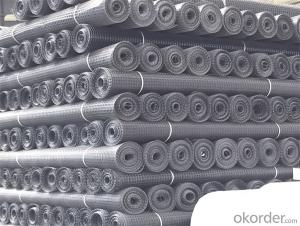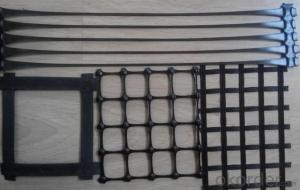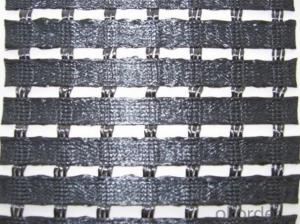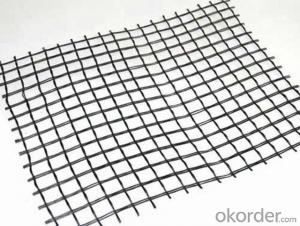Tensar Triax Geogrid For Soil Control High Strength
- Loading Port:
- Qingdao
- Payment Terms:
- TT OR LC
- Min Order Qty:
- 5000 m²
- Supply Capability:
- 2000000 m²/month
OKorder Service Pledge
OKorder Financial Service
You Might Also Like
Specifications of Geogrid:
High tensile strength at both longitudial and transerse direction
Improving bearing capacity of foundation
Preventing cracking and subsiding
Convenient to construct,reducing cost and maintaining expense
Applications of Geogrid:
Make reinforce treatment for various kinds of soft soil foundation to evenly distribute load stress and reduce uneven settlement, not easy to generate static electricity, and flammability property good in the coal mine. It is easy to wash coal.
Used in highway, railway, port, airport and municipal project. Support in the recovery working face of coal mine and roadway in the coal mine.
Index Properties | Test Method | Unit | GG1515 | GG2020 | GG3030 | GG4040 |
MD TD | MD TD | MD TD | MD TD | |||
Polymer | -- | -- | PP | PP | PP | PP |
Minimum Carbon Black | ASTM D 4218 | % | 2 | 2 | 2 | 2 |
Tensile Strength@ 2% Strain | ASTM D 6637 | Kn/m | 5 5 | 7 7 | 10.5 10.5 | 14 14 |
Tensile Strength@ 5% Strain | ASTM D 6637 | Kn/m | 7 7 | 14 14 | 21 21 | 28 28 |
Ultimate Tensile Strength | ASTM D 6637 | Kn/m | 15 15 | 20 20 | 30 30 | 40 40 |
Strain @ Ultimate Strength | ASTM D 6637 | % | 13 10 | 13 10 | 13 10 | 13 10 |
Structural Integrity | ||||||
Junction Efficiency | GRI GG2 | % | 93 | 93 | 93 | 93 |
Flexural Rigidity | ASTM D 1388 | Mg-cm | 700000 | 1000000 | 3500000 | 10000000 |
Aperture Stability | COE Method | mm-N/deg | 646 | 707 | 1432 | 2104 |
Dimensions | ||||||
Roll Width | -- | M | 3.95 | 3.95 | 3.95 | 3.95 |
Roll Length | -- | M | 50 | 50 | 50 | 50 |
Roll Weight | -- | Kg | 39 | 50 | 72 | 105 |
MD denotes Machine direction. TD denotes transverse direction. | ||||||
Property of Geogrid:
1.) Improve roadbed bearing capacity,enlarge road lifetime.
2.) Prevent road collapse and crack
3.) Prevent soil and water loss in slope
4.) Could replace steel-plastic geogrid in coal mine.
FAQ:
1. How to order your geogrid ?
a). Tensile strength in warp & weft direction
b). Grid size
c). Width and length
d). Quantity
2. Payment term .
a) TT
b) LC AT SIGHT
c) cash
d) 30% contact value as deposit ,the blance 70% be paid after received the copy of bl .
3. Delivery time
a) 19-25 days after received your depsit .
4. What is MQQ ?
a) 2500 m2 as MQQ , we can also produce sample for you .
Geogrid Show:
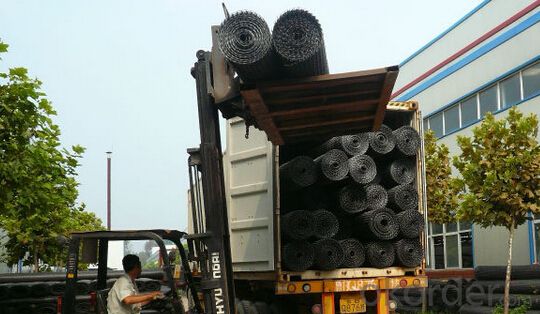
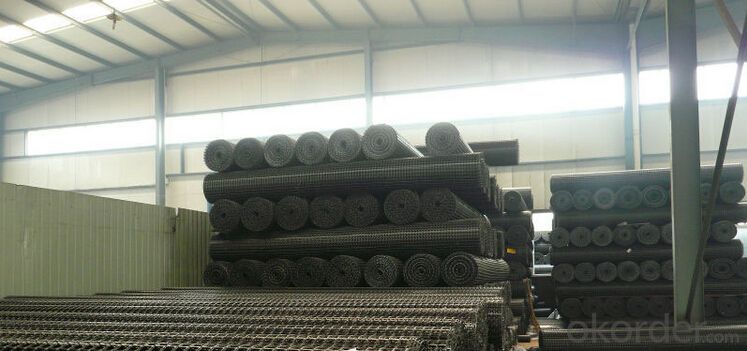
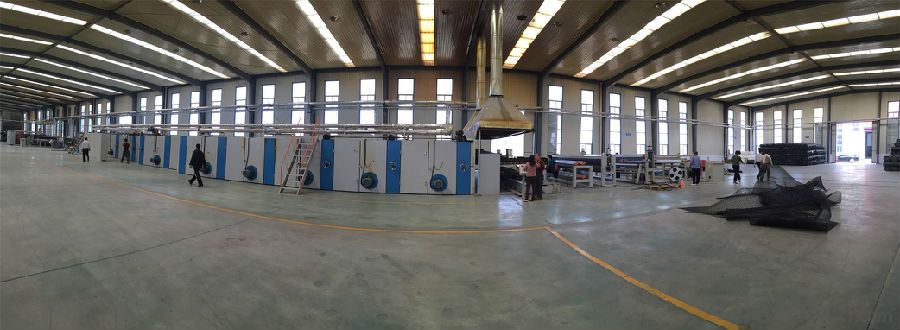
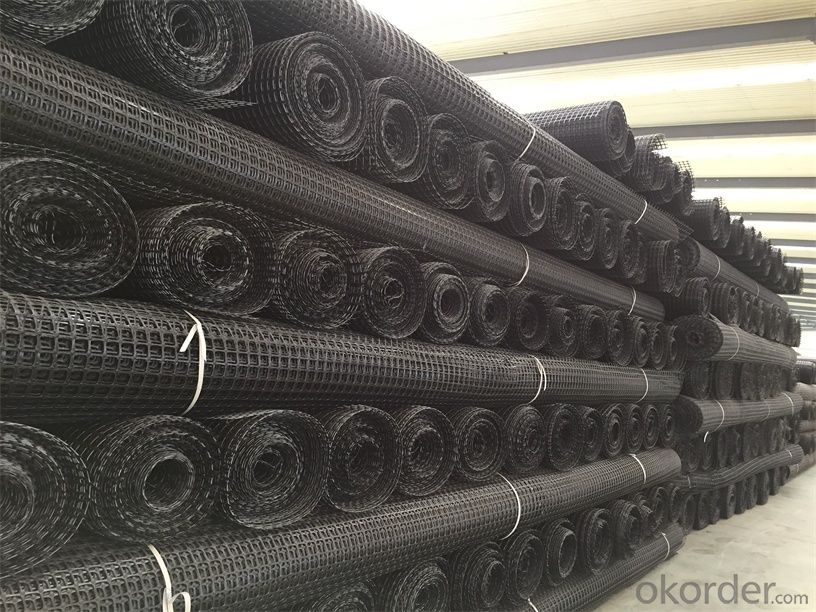
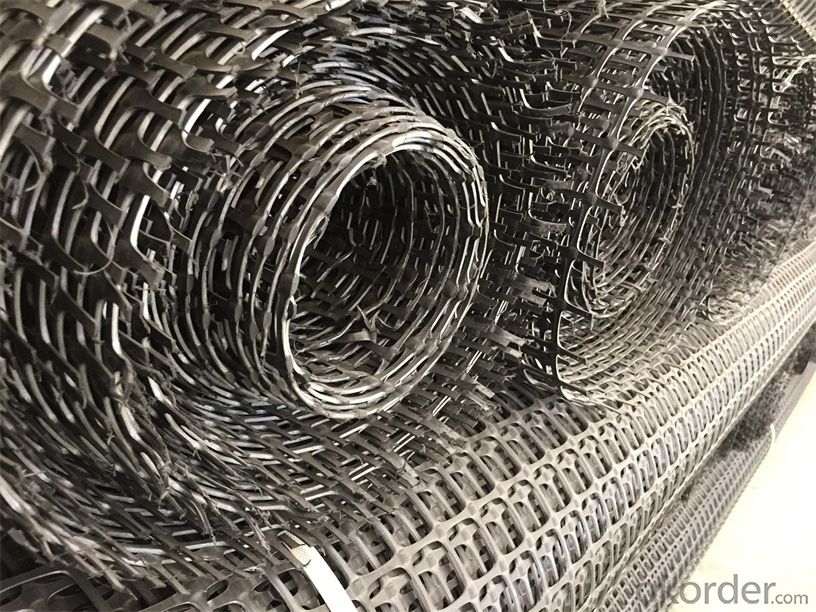
- Q:What are the factors to consider when designing with geogrids for reinforced soil walls?
- When designing with geogrids for reinforced soil walls, several factors need to be considered. Firstly, the strength and stiffness of the geogrid material is crucial, as it should be able to provide adequate reinforcement to the soil. The type and characteristics of the soil being reinforced also play a significant role, as its properties, such as cohesion and angle of internal friction, impact the overall stability of the wall. Additionally, the design should consider the required wall height, slope angle, and the anticipated loads or surcharges that the wall will be subjected to. Proper installation techniques and construction quality control are also essential factors to ensure the effectiveness and long-term performance of the reinforced soil wall.
- Q:How many square meters of geogrid?
- Two-way geogrid width of 4 meters, the volume of 30-50 meters long; one-way geogrid width of 2 meters in general, the volume of 30-50 meters long.
- Q:What are the factors that affect the design of geogrid-reinforced structures?
- Several factors can influence the design of geogrid-reinforced structures. These factors include the type and properties of the soil, the magnitude and type of loads the structure will experience, the desired level of stability and durability, the site conditions and constraints, and any applicable design codes and standards. Additionally, factors such as construction techniques, environmental considerations, and cost-effectiveness also play a role in determining the design of geogrid-reinforced structures.
- Q:Can geogrids be used in stabilization of coastal dunes?
- Yes, geogrids can be used in the stabilization of coastal dunes. Geogrids are commonly used for soil reinforcement and erosion control, making them effective in preventing dune erosion and maintaining their stability. By installing geogrids, the dune's natural sand and vegetation can be retained, while preventing sand displacement and erosion caused by wind and waves.
- Q:How do geogrids help in the construction of embankments?
- Geogrids help in the construction of embankments by providing reinforcement and stability to the soil. They are placed within the embankment layers, acting as a support system that distributes the load more evenly and prevents soil erosion. This reinforcement enhances the embankment's strength, durability, and overall structural integrity.
- Q:How are geogrids used in road construction?
- Geogrids are used in road construction to reinforce and stabilize the soil, preventing lateral movement and enhancing load-bearing capacity. These synthetic materials are placed within the road base or sub-base layers, creating a strong, flexible grid structure that distributes loads more evenly, reduces rutting, and minimizes the formation of cracks and potholes.
- Q:Are there any specific requirements for geogrid installation in road construction?
- Yes, there are specific requirements for geogrid installation in road construction. These requirements include proper site preparation, ensuring the geogrid is laid flat and taut, adequate overlap and anchoring, and proper compaction of the surrounding soil. Additionally, the geogrid should be installed according to the manufacturer's guidelines and in compliance with relevant industry standards and specifications.
- Q:What is the recommended geogrid connection method for specific applications?
- The recommended geogrid connection method for specific applications depends on factors such as the type of soil, slope angle, and expected load conditions. Some common geogrid connection methods include mechanical connectors, welded connections, and soil wrap-around techniques. It is important to consult with a geotechnical engineer or follow manufacturer's recommendations to determine the most suitable connection method for a specific application.
- Q:What are the differences between geogrids and geonets?
- Geogrids and geonets are both geosynthetic materials used in civil engineering and construction, but they serve different purposes. Geogrids are typically used for soil reinforcement and stabilization, providing tensile strength to improve the stability of soil structures. On the other hand, geonets are primarily used for drainage applications, allowing the flow of water while retaining soil particles. In summary, geogrids enhance soil stability, while geonets aid in drainage.
- Q:What are the factors that affect the installation time of geogrids?
- There are several factors that can affect the installation time of geogrids. Some of the key factors include the size and complexity of the project, the type and condition of the soil, the equipment and manpower available, and any unforeseen challenges or obstacles encountered during the installation process. Additionally, factors such as weather conditions and site accessibility can also impact the installation time.
1. Manufacturer Overview |
|
|---|---|
| Location | |
| Year Established | |
| Annual Output Value | |
| Main Markets | |
| Company Certifications | |
2. Manufacturer Certificates |
|
|---|---|
| a) Certification Name | |
| Range | |
| Reference | |
| Validity Period | |
3. Manufacturer Capability |
|
|---|---|
| a)Trade Capacity | |
| Nearest Port | |
| Export Percentage | |
| No.of Employees in Trade Department | |
| Language Spoken: | |
| b)Factory Information | |
| Factory Size: | |
| No. of Production Lines | |
| Contract Manufacturing | |
| Product Price Range | |
Send your message to us
Tensar Triax Geogrid For Soil Control High Strength
- Loading Port:
- Qingdao
- Payment Terms:
- TT OR LC
- Min Order Qty:
- 5000 m²
- Supply Capability:
- 2000000 m²/month
OKorder Service Pledge
OKorder Financial Service
Similar products
New products
Hot products
Hot Searches
Related keywords


